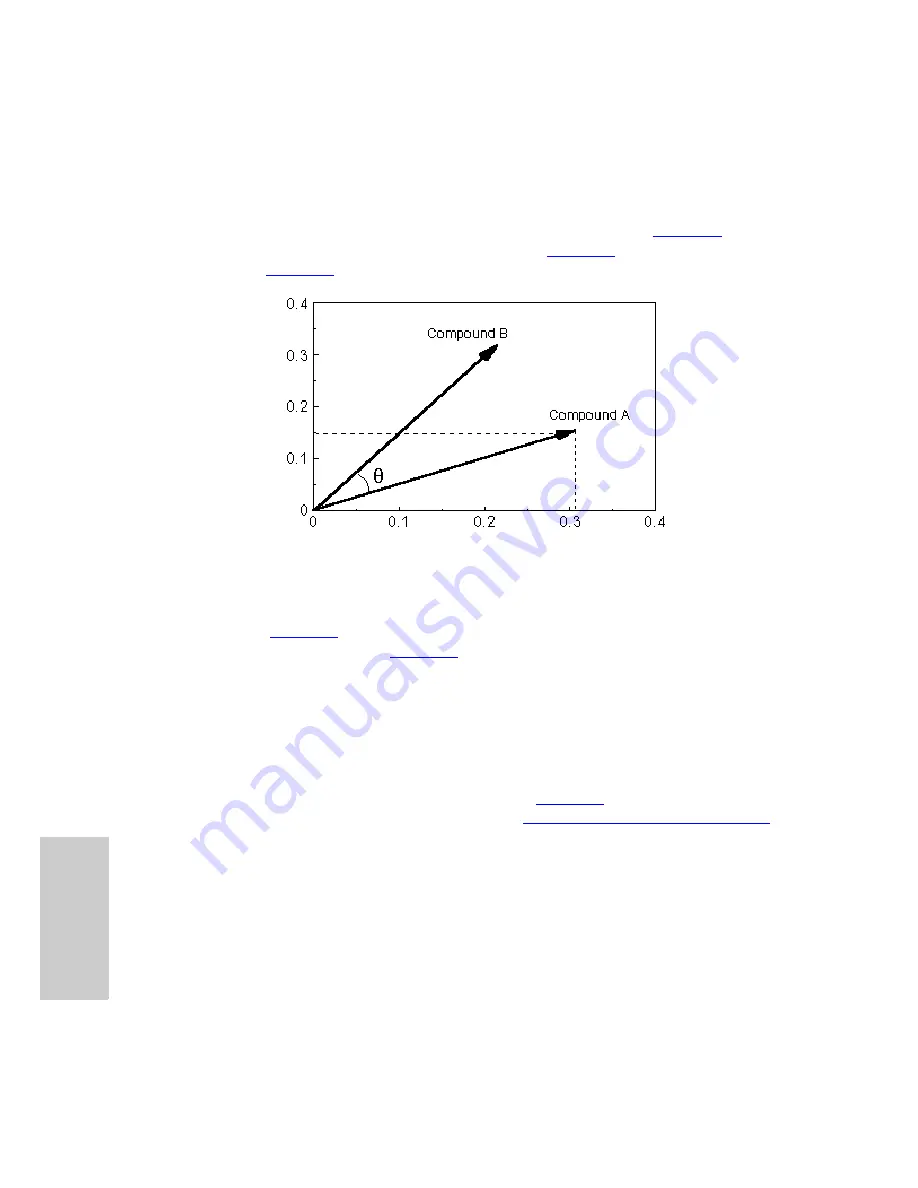
56
Spectral Contrast Theory
5
5.2.1 Vectors Derived from Two Wavelengths
The Spectral Contrast algorithm uses vectors to characterize spectra (
). To
understand the vector principle, consider two vectors (
) based on the spectra
.
Figure 5-2 Plotting Vectors for Two Spectra
are in absorbance units at the two wavelengths used to calculate
. The head of the vector for Compound A is at the
intersection of the absorbance values (for Compound A) at the two wavelengths
represented by each axis. The other vector is similarly derived for the spectrum of
Compound B.
The vector for Compound B points in a direction different from that of the vector for
Compound A. The difference in direction, which reflects the difference in the absorbance
ratios of the two compounds at wavelengths 245 nm and 257 nm, is called the Spectral
Contrast Angle. A Spectral Contrast angle (e.g.,
θ
)
greater than zero
indicates a shape difference between spectra (see
Section 5.3, Spectral Contrast Angles
).
The length of the vector is proportional to the concentration.
5.2.2 Vectors Derived from Multiple Wavelengths
When absorbance ratios are limited to two wavelengths, the chance that two different
spectra will have the same absorbance ratio is much greater than if comparison is made
using absorbance ratios at many wavelengths. Therefore, the Spectral Contrast technique
uses absorbances from multiple wavelengths to form a vector in an
n
-dimensional vector
space, where
n
is the number of wavelengths from the spectrum.
A
U
at
25
7 nm
AU at 245 nm






























